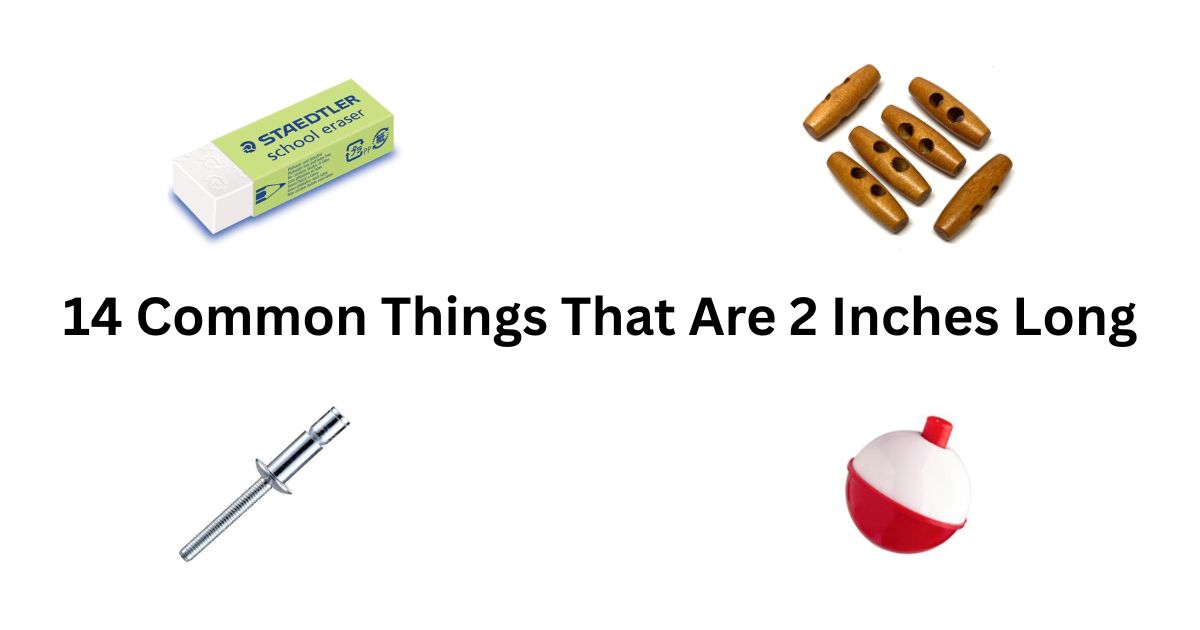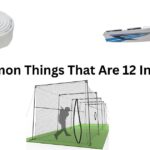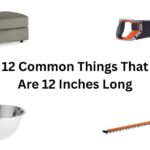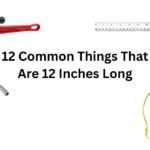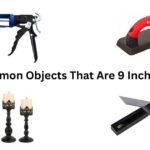Ever tried buying something online and the listing just says “2 inches” with no photo for scale? You’re squinting at your screen thinking, “Is that tiny or just small?” Happens all the time with accessories, craft supplies, and hardware parts. 2 inches exactly equal to 5.08 cm.
Most of us don’t carry tape measures in our pockets. We need quick visual anchors – something we can picture instantly without hunting for rulers or doing mental math. That golf tee sitting in your car’s cup holder? That safety match from your camping kit? Both are your cheat codes for understanding this measurement.
This guide breaks down 14 real objects that measure right around this length. No fluff, no boring conversions – just practical comparisons you’ll actually remember next time you need them.
What 2 Inches Actually Means
Two inches is the same as 5.08 centimeters. That’s just over 50 millimeters, or about half the width of your hand.
Here’s the simple version: picture the width of two adult fingers pressed together, or slightly more than 5 cm if you think metric.
| Unit | Exact Measurement |
| Centimeters | 5.08 cm |
| Millimeters | 50.8 mm |
| Feet | 0.167 ft |
| Meters | 0.051 m |
14 Objects That Show You Exactly What 2 Inches Looks Like
| Object | Category | Measurement Type |
| Golf Tee | Sports | Total Length |
| Safety Match Stick | Household | Total Length |
| School Eraser | Office Supply | Length |
| Collar Stay (Small) | Fashion/Clothing | Length |
| Toggle Closure Barrel | Fashion/Outerwear | Barrel Length |
| Furniture Slider Pad | Home Hardware | Diameter |
| Heavy-Duty Dowel Rod | Construction/DIY | Diameter |
| Hockey Tape Roll | Sports Equipment | Width |
| Portable Speaker Driver | Electronics | Diameter |
| Structural Rivet | Hardware/Fashion | Total Length |
| Snap Hook | Accessories | Total Length |
| Fender Washer | Construction | Outer Diameter |
| Wood Shim | Construction | Width |
| Fishing Bobber | Sports/Outdoors | Diameter |
1. Golf Tee
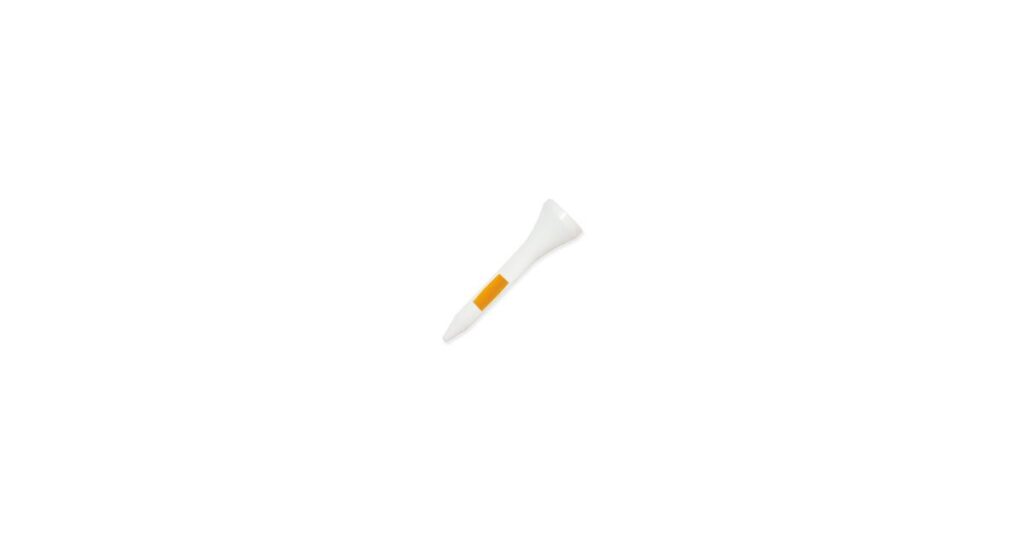
Standard golf tees measure almost exactly 2 inches from the pointed tip to the cup on top, according to USGA guidelines. Walk into any pro shop or sporting goods store, and every wooden or plastic tee you pick up will be sized identically.
Golfers need this specific height to properly elevate the ball without it sitting too high or too low for clean contact. Too short and you’re hitting down into the turf; too tall and you’re popping the ball into the air with no distance.
Keep one in your glove box as a permanent measuring reference. They’re cheap, durable, and won’t get lost in a junk drawer like other small items.
2. Safety Match Stick
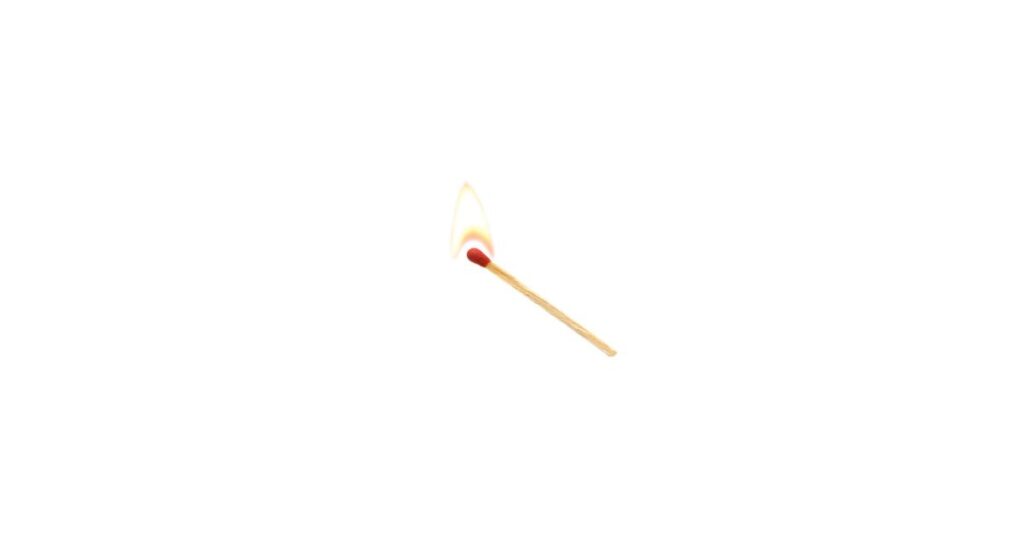
Open any matchbook from a restaurant or a box of strike-anywhere matches from the hardware store. Each individual match measures right at this length – a size that’s been standardized since matches went mainstream.
They’re long enough to keep your fingers safe from the flame, but short enough to fit neatly in a small box. It’s a perfect balance for everyday use.
This consistency across brands makes matches one of the most reliable measurement tools hiding in plain sight. Plus, almost everyone has a pack somewhere.
3. School Eraser (Rectangle)
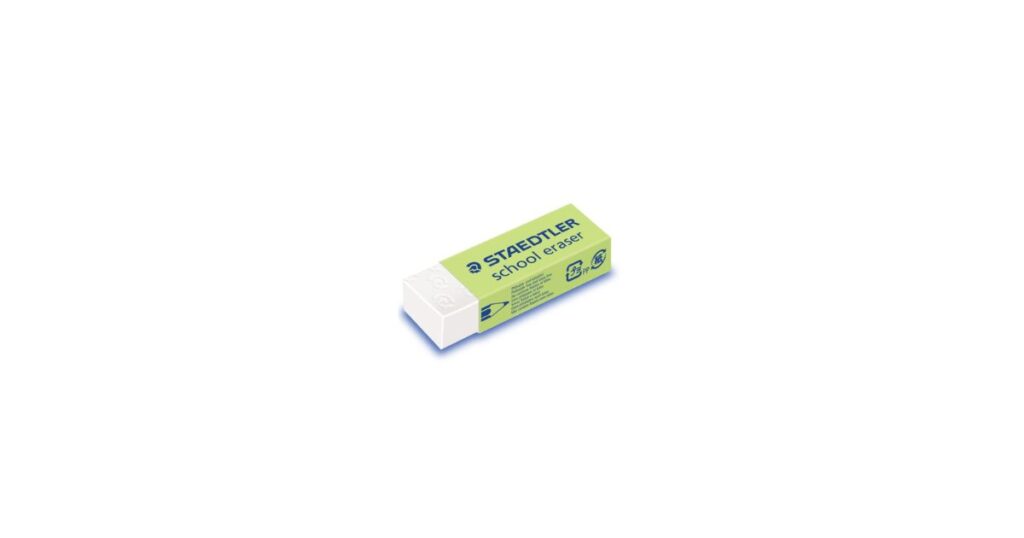
That classic pink or white block eraser from elementary school? Still the same size it was 30 years ago. Pick up a standard block eraser at any office supply store and it’ll measure right around 2 inches length.
The size makes sense for small hands and pencil cases. Big enough to actually erase mistakes without cramping your hand, small enough to toss in a backpack pocket without taking up room.
Keep one on your desk. When you need to visualize this measurement for online shopping or DIY projects, just grab your eraser instead of digging for a ruler.
4. Collar Stay (Small)
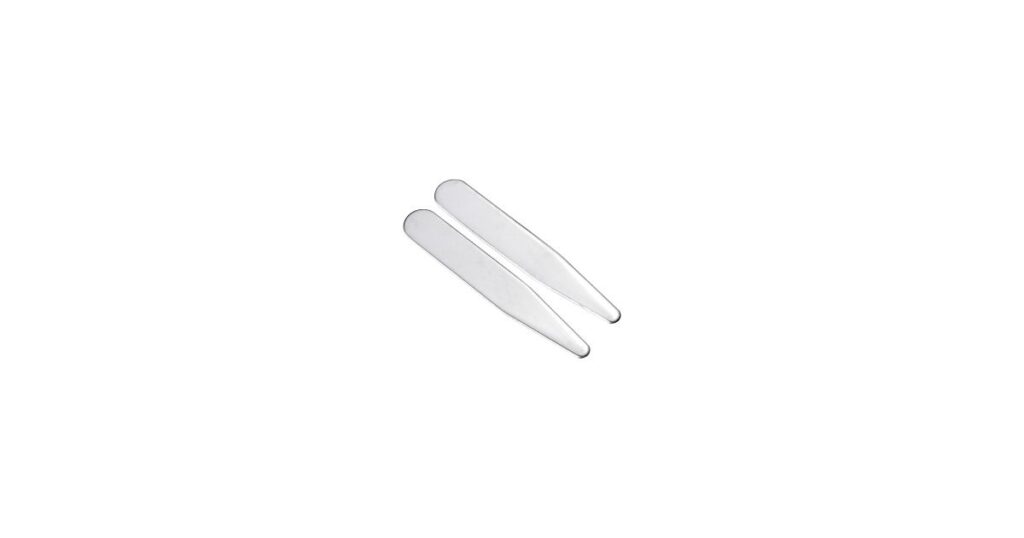
Those thin plastic or metal strips that slide into dress shirt collar pockets measure exactly 2 inches length in their small size. Men’s formalwear brands stick to this standard so stays work across different shirt makers.
The length perfectly fits the collar pocket without poking through the fabric or being too short to provide structure. This keeps collars crisp from morning coffee through evening dinner meetings.
If you’ve got dress shirts hanging in your closet, check the collar pockets. You’ll find these removable stiffeners ready to prove the measurement.
5. Toggle Closure Barrel
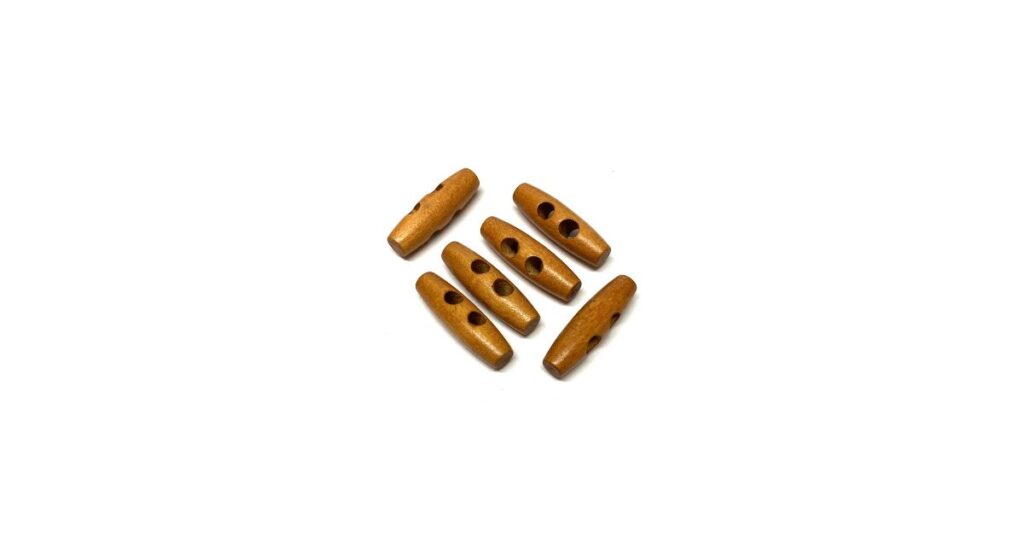
The wooden or plastic barrel piece on duffle coats and winter jackets – that cylindrical toggle the rope loop fastens around – typically measures 2 inches length. Classic outerwear has used these for decades because they work even with thick gloves.
Designers choose this size because it provides enough grip surface without creating bulk under the coat. Short enough to look proportional, long enough to easily grasp when your hands are freezing.
Check any toggle coat in your closet or at a thrift store. That distinctive barrel shape? It’s your measurement reference in wearable form.
6. Furniture Slider Pad
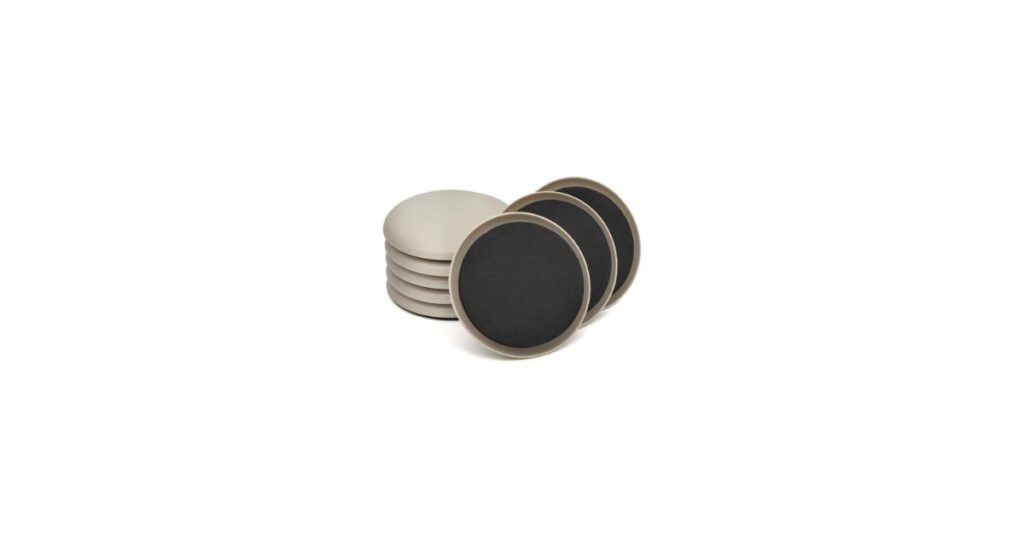
Small self-adhesive felt or plastic pads you stick under chair legs come in 2 inches diameter. Home improvement stores stock these for protecting hardwood floors from scratches and making furniture easier to slide around.
This size covers the bottom of most dining chair legs without being visible from the sides. Large enough to distribute weight properly, small enough not to look obvious or peel off easily.
Next furniture moving day, grab a pack. You’ll protect your floors and have a perfect circular reference for this measurement.
7. Heavy-Duty Dowel Rod (Diameter)
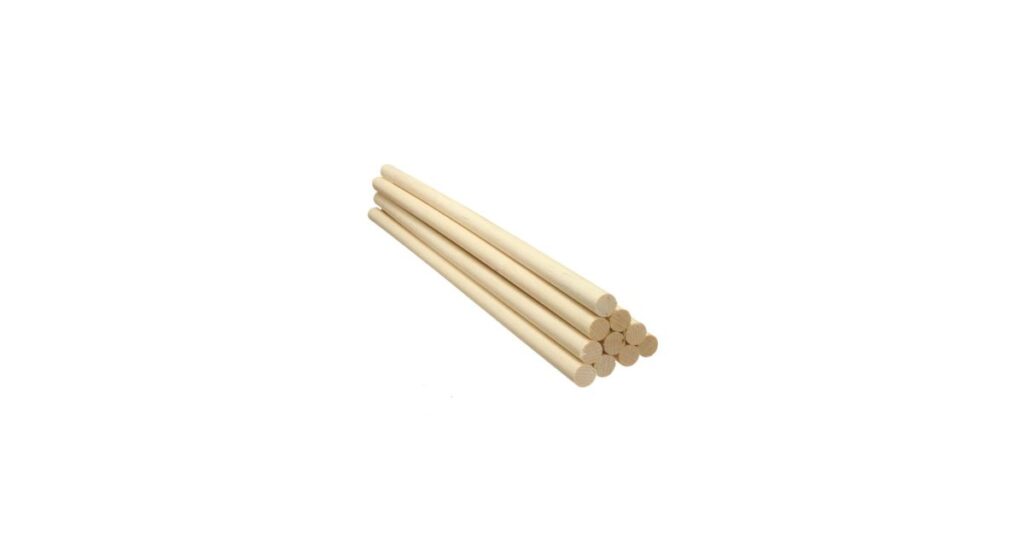
Thick wooden dowel rods used for custom closet systems or industrial-strength curtain rods can have this diameter. These aren’t craft-store dowels – we’re talking serious load-bearing support beams.
They’re strong enough to hold heavy clothes or curtains without bending. Builders even use them for shelves that need to stay solid over time.
Home improvement stores keep these in the lumber section. Pick one up and you’ll feel why this thickness became standard for heavy-duty projects.
8. Hockey Tape Roll (Width)
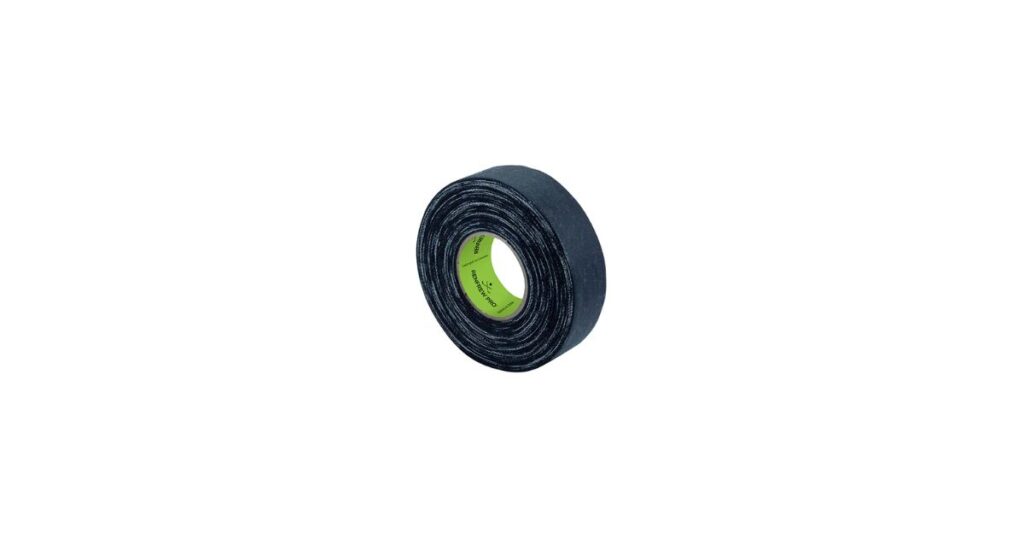
Cloth or friction hockey tape for wrapping stick blades comes in rolls exactly 2 inches wide — the universal standard. Every sporting goods store stocks the same width because it’s become the universal standard from youth leagues to professional teams.
The width covers most blade sizes in one or two wraps without wasting tape or leaving gaps. Players get consistent grip and blade protection whether they’re using junior or adult-sized sticks.
Even if you don’t play hockey, these rolls make great grip tape for tool handles, bike handlebars, or anything needing extra traction.
9. Portable Speaker Driver (Small)
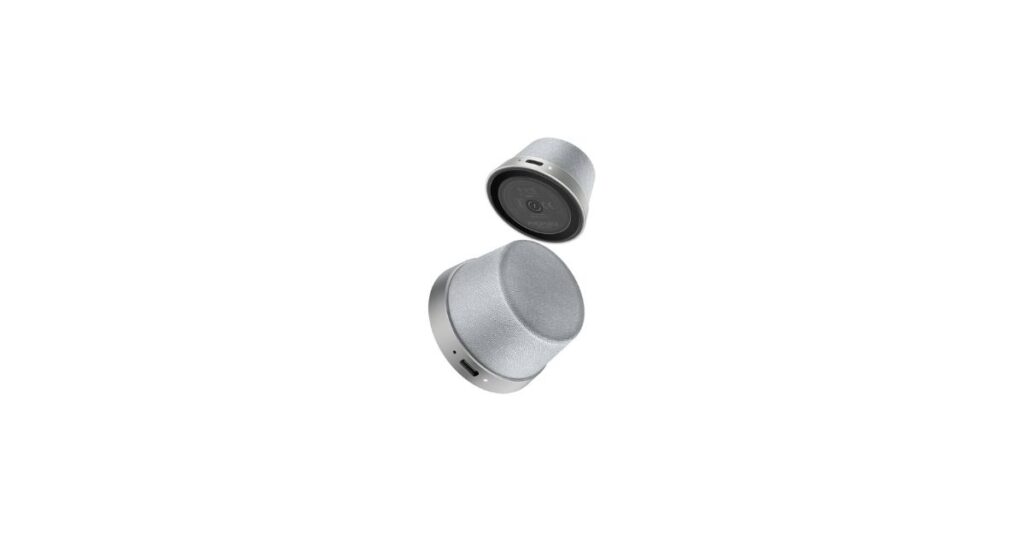
The actual speaker driver inside those clip-on Bluetooth speakers you take hiking or to the beach often measures this diameter. Open up the mesh grill (carefully) and you’ll see the circular driver underneath.
Engineers design compact speakers at this size to balance portability with sound quality. Smaller drivers fit in pocket-sized cases but sacrifice bass; larger ones sound better but make the device bulky.
This diameter hits the sweet spot for backpack speakers that don’t sound tinny but won’t weigh you down on a trail.
Read Also: How Long is 7 Inches? 15 Common Things That Are 7 Inches Long
10. Structural Rivet (Length)
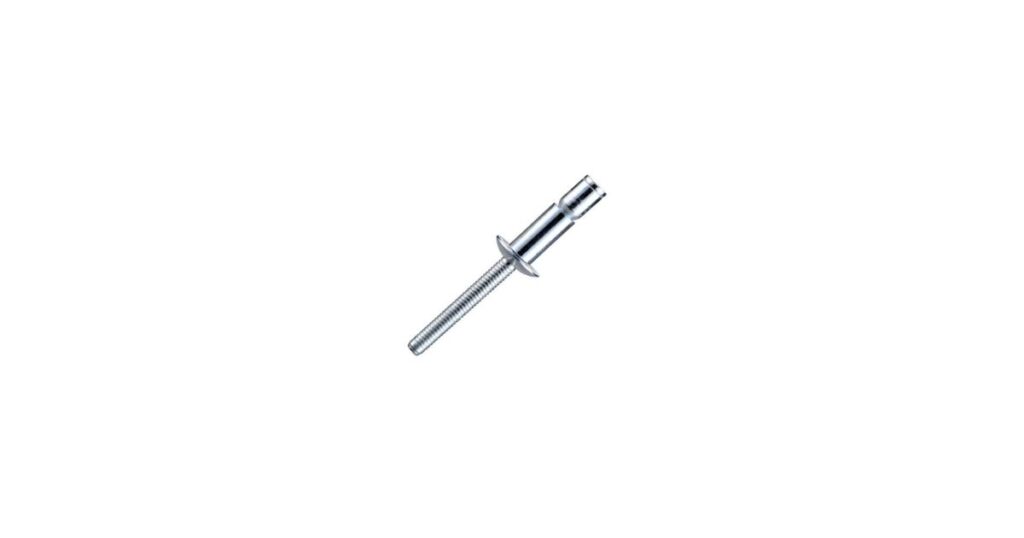
Large metal rivets on leather messenger bags, heavy denim jackets, or industrial work gear measure about 2 inches length from head to tail. These aren’t decorative – they’re functional fasteners holding thick materials under tension.
Some of the rivet goes through thick leather or canvas, while the rest gets pressed flat to hold everything tight. If it’s too short, it won’t grip — too long, and it sticks out uncomfortably.
Quality bags use these at stress points like strap attachments and corner reinforcements. Check a well-made leather bag and you’ll see why this length works.
11. Snap Hook (Total Length)
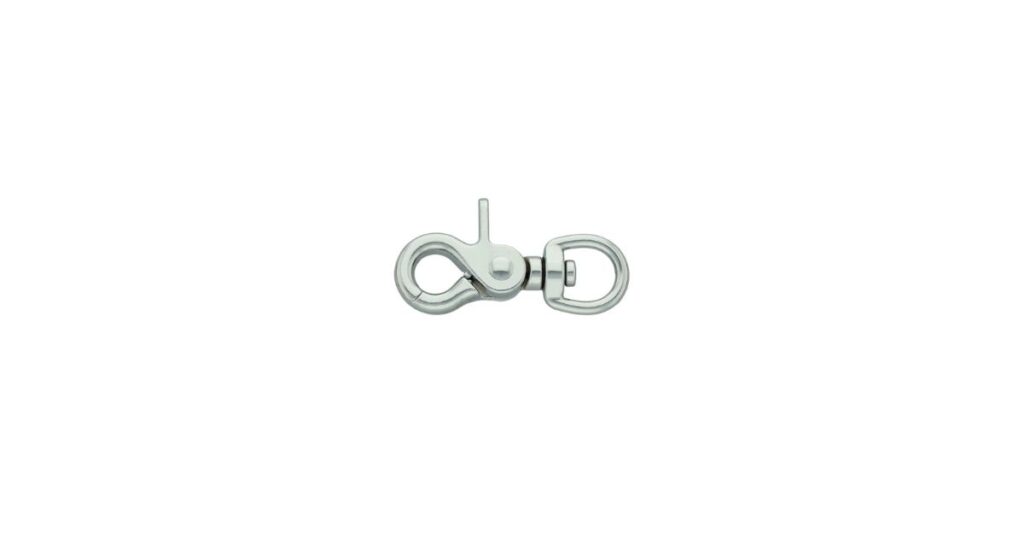
Metal snap hooks that attach adjustable straps to purses and backpacks measure 2 inches long from the top of the spring-loaded gate to the bottom of the hook. These connectors let you customize bag configurations and swap straps quickly.
The size makes them easy to operate one-handed while being sturdy enough for daily use. Smaller hooks feel flimsy and break easily; larger ones add unnecessary weight and bulk.
Dig through your bag collection. Almost every crossbody purse or daypack with removable straps uses hooks at this length.
12. Fender Washer (Outer Diameter)
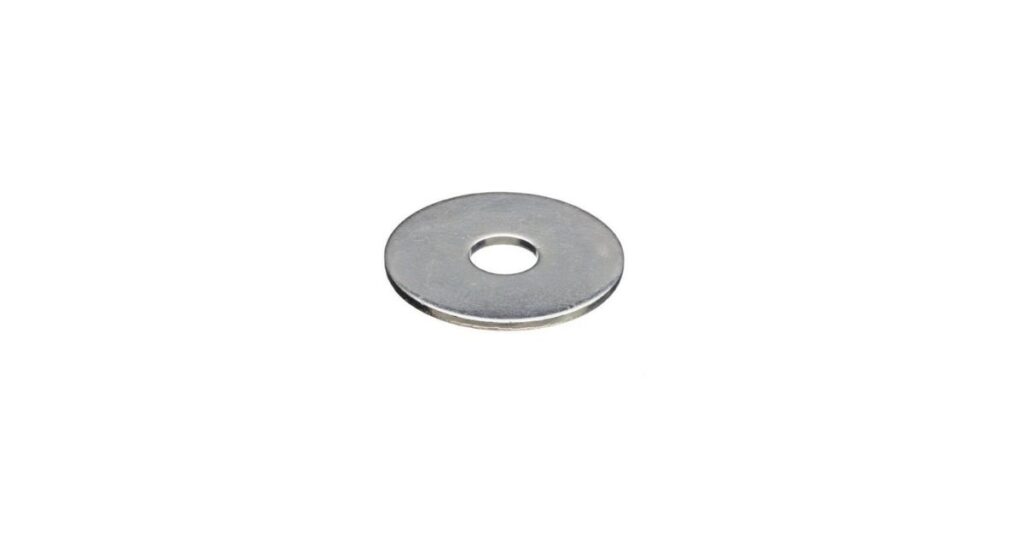
Large fender washers used in construction and furniture assembly have 2 inches outer diameter. The wide surface distributes bolt pressure across soft materials like wood or drywall, preventing pull-through failures.
Contractors use these when building decks, installing cabinets, or mounting heavy items to walls. That extra surface area makes the difference between secure installation and costly repairs.
Hardware stores keep bins of these in the fasteners aisle. Grab one next project and you’ll see why professionals swear by this size.
13. Wood Shim (Width)
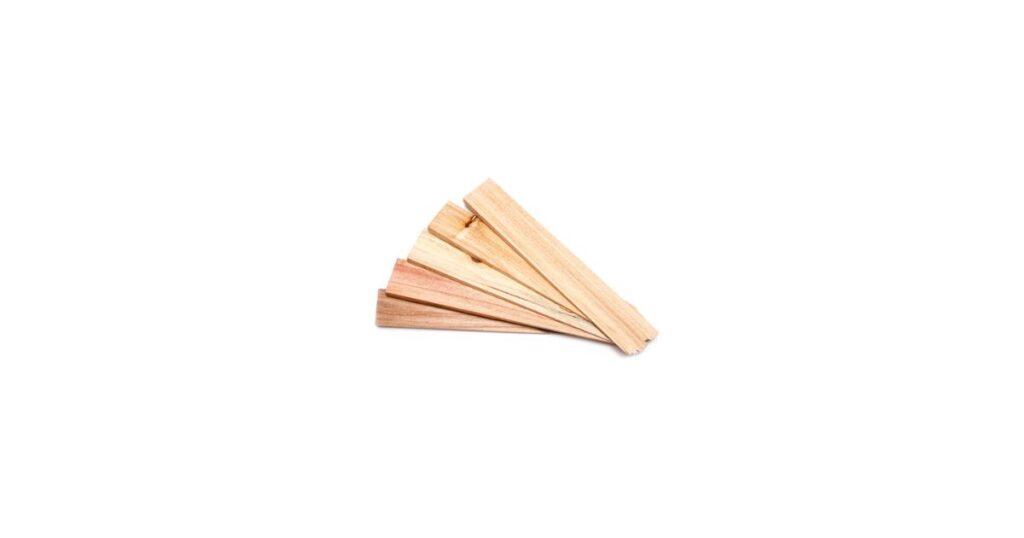
Pre-cut cedar or plastic construction shims come in uniform widths at this measurement. These tapered wedges level cabinets, doors, and windows during installation by filling gaps and correcting angles.
The width gives installers enough material to work with while keeping shims narrow enough for tight spaces. Too wide and they won’t fit; too narrow and they split or compress under pressure.
Every home improvement project uses shims somewhere. Buy a bundle and you’ve got built-in measurement references plus tools for your next install.
Read Also: How Long is 8 Inches? 13 Everyday Objects That Are 8 Inches Long
14. Fishing Bobber (Diameter)
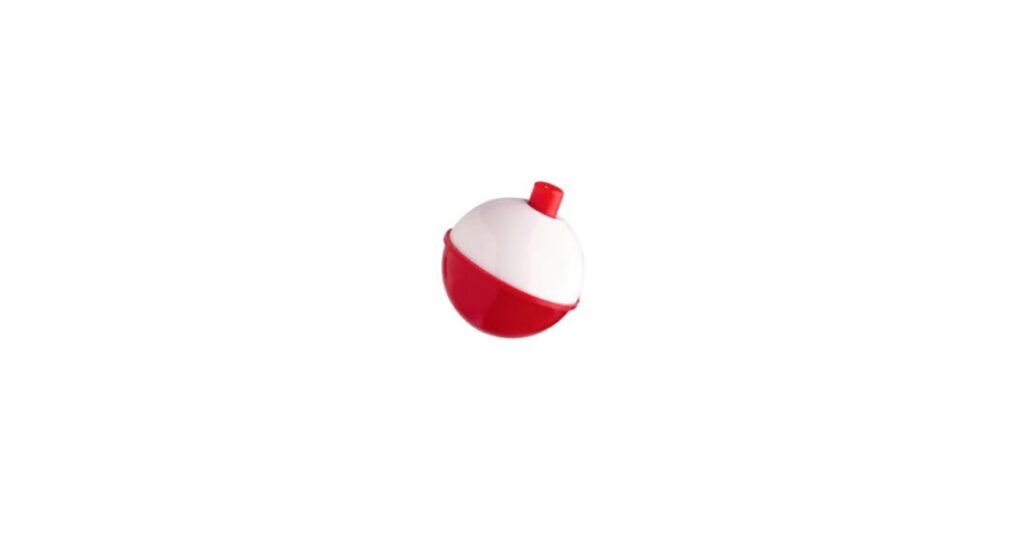
Traditional round red-and-white fishing bobbers measure this across. These floating indicators sit on the water’s surface until a fish bites, then dip or dart to signal action below.
Anglers choose this size for medium freshwater fish because it’s visible from shore while staying sensitive to bites. Smaller bobbers work for panfish; larger ones handle catfish and bass.
Even non-fishers recognize these classic bobbers. They’re the iconic “fishing scene” float you picture when someone mentions bobbers.
Measuring Without Tools: Quick Visual Hacks
Credit Card Method: A standard credit card measures 3.37 inches long. This measurement is roughly 60% of that length – just picture cutting off the last third.
Finger Width: Press your index and middle fingers together. For most adults, the combined width comes very close. This works great when you’re at stores comparing product sizes.
Quarter Stack: Stack 10 U.S. quarters flat. The height of that stack gets you right there. Keep spare change in your car for impromptu measuring.
Dollar Bill Fold: Fold a dollar bill in half along its length (not width). The folded width is close to this measurement, though slightly wider at about 2.6 inches.
Real-World Applications You’ll Actually Use
Online Shopping: When buying cabinet hardware, jewelry, or small electronics, sellers often list dimensions without scale photos. Now you can picture exactly what “2-inch drawer pulls” or “2-inch speaker drivers” actually look like before clicking “buy.”
DIY Projects: Spacing shelf brackets? Installing tile backsplash? Knowing this measurement by sight helps you eyeball spacing and estimates without constantly grabbing your tape measure. Speeds up projects and reduces mistakes.
Craft and Sewing: Cutting fabric strips, measuring ribbon lengths, or spacing buttons becomes faster when you can visualize the distance. Use your fingers as guides and save time pinning and measuring.
Kids’ Homework: When your kid asks for help with measurement assignments, pull out a golf tee or eraser instead of explaining abstract numbers. Visual learning sticks better than “5.08 centimeters.”
Furniture Arrangement: Wondering if that gap behind your couch is big enough for a certain item? Use the finger method or picture stacked quarters to estimate clearance before moving heavy furniture around.
FAQ’s About 2 inches
How does 2 inches compare to 5 cm?
It’s slightly larger at 5.08 cm – basically identical for everyday purposes. The difference is less than a millimeter, so don’t stress the distinction unless you’re doing precision engineering.
Can I use my fingers to measure 2 inches every time?
For rough estimates, absolutely. Your finger width stays consistent, though hand sizes vary between people. Measure your own fingers once against a ruler to know your personal reference point.
What’s the easiest object to remember?
Most people find golf tees or matchsticks easiest because they’re single, simple shapes without variations. Erasers work too, but brands sometimes vary slightly in size.
Why do so many things use 2 inches exact measurement?
It’s a sweet spot in design – large enough to be functional and durable, small enough to stay portable and unobtrusive. Many objects independently evolved toward this size because it simply works.
Is 2 inches closer to a quarter or half foot?
It’s one-sixth of a foot, since 12 inches make a foot. Definitely closer to a quarter (3 inches) than a half (6 inches) in the foot scale.
Why This Measurement Matters More Than You Think
This length shows up in manufacturing standards across industries because it represents practical limits. Smaller and parts become too delicate or hard to handle; larger and they stop being portable or start looking clunky.
Fashion designers, hardware engineers, and sporting goods manufacturers independently arrived at this size for dozens of products. It’s not random – it’s the result of decades of use testing and ergonomic research.
Understanding this measurement by sight saves you time, money, and frustration. No more guessing at online listings, no more buying the wrong size hardware, no more “I thought it would be bigger” moments when packages arrive.
Next time someone mentions this measurement, you’ll instantly picture a golf tee, a matchstick, or ten stacked quarters. That mental library of comparisons makes you faster at shopping, building, and solving everyday spatial puzzles.
Keep a golf tee in your wallet or a small eraser in your desk drawer. You’ve now got a permanent, portable measurement tool that never needs batteries.

I am the editor and author of StoriesRadius.com, a blog about measurements and dimensions. I enjoy turning numbers and sizes into simple stories that anyone can understand. From everyday objects to curious facts, I share clear guides based on real research and experience. My goal is to make learning about length, height, and size fun, useful, and easy for all readers.
